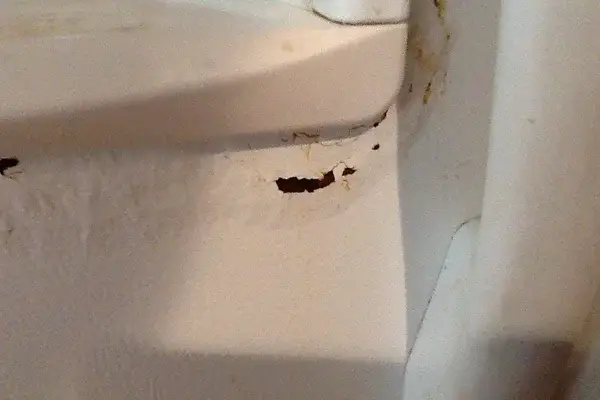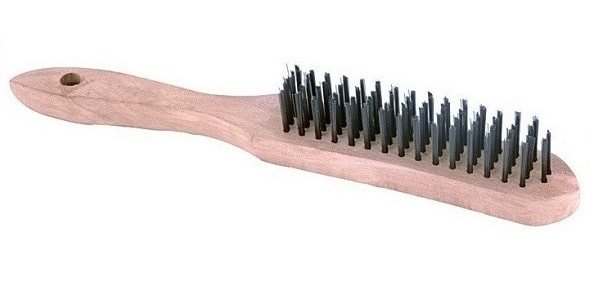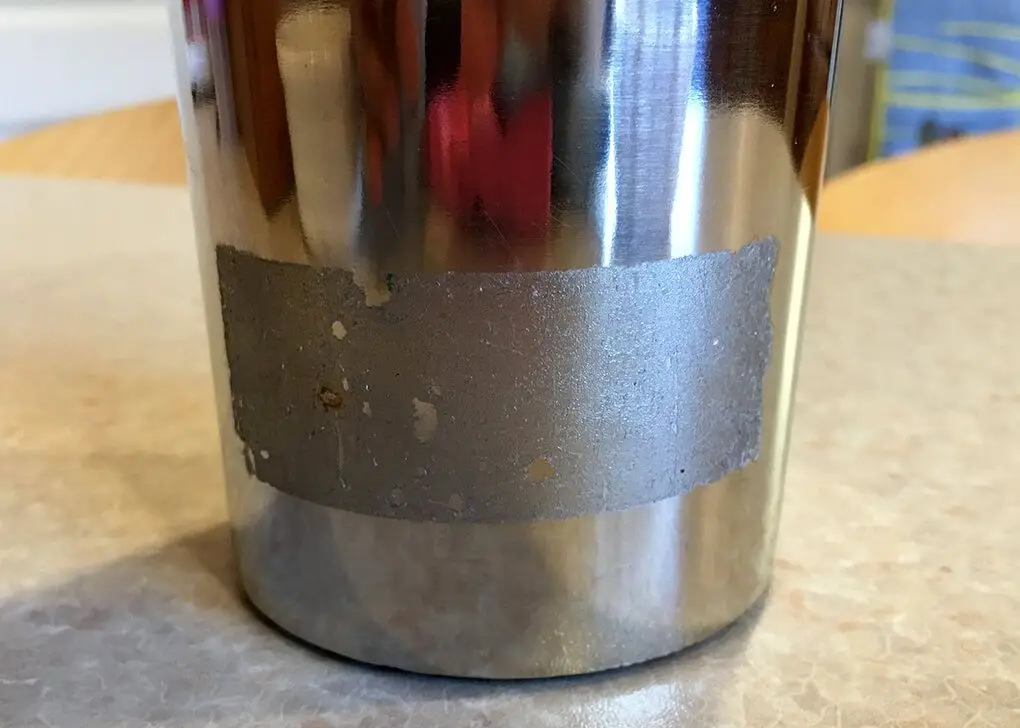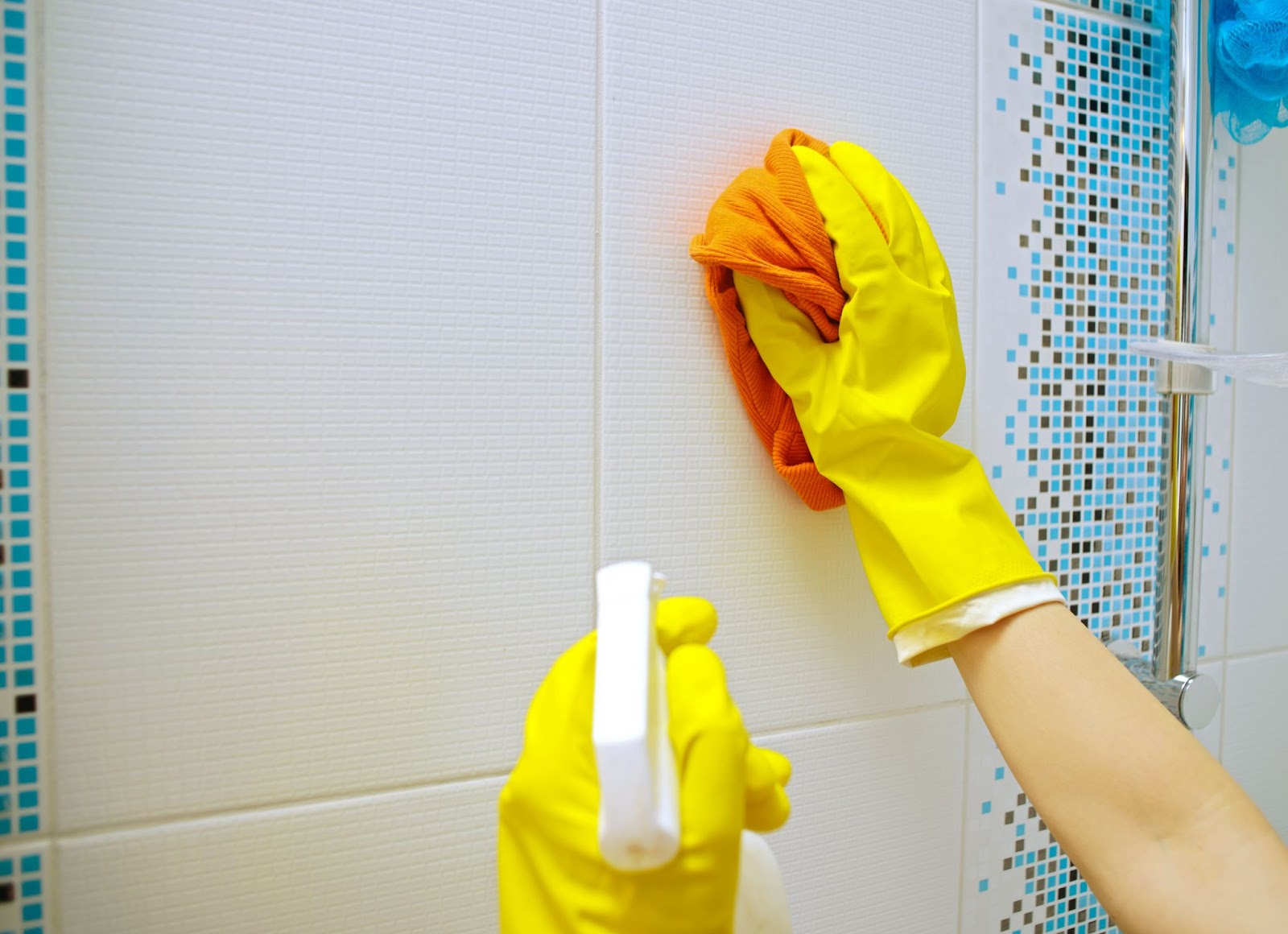Rust in a refrigerator can be an unsightly and potentially dangerous issue. Not only does it detract from the appearance of the appliance, but it can also indicate a more serious problem, such as a corrosion of the metal. In this blog post, we will delve into the causes of rust in refrigerators and explore various methods for removing it, as well as ways to prevent it from forming in the first place.
The first step in addressing rust in a refrigerator is to understand what causes it. There are a few key factors that contribute to the formation of rust, including moisture, exposure to the elements, and a lack of proper maintenance. Additionally, certain types of refrigerators are more susceptible to rust than others, such as those made of low-quality materials or those located in damp or humid environments.
So, what can be done to eliminate rust in a refrigerator and keep it from coming back? In this post, we will provide practical and effective tips for removing rust, as well as advice on how to prevent rust from forming in the first place. Whether you’re dealing with a minor spot or a full-blown rust problem, we’ve got you covered!
Rust In Refrigerator
Rust in a refrigerator is a common problem, but there’s no need to worry! There are some fantastic products and methods available that can get rid of rust and keep it from coming back. I
There are some amazing rust removers available on the market, and many of them are safe to use on appliances like refrigerators. For example, there’s a product called Naval Jelly that’s specifically designed for removing rust from metal. It’s easy to use, and it works wonders! Another great option is a product called WD-40 Specialist Long-Term Corrosion Inhibitor. This stuff is incredible, and it provides long-lasting protection against rust.
There are a few simple things you can do to get rid of rust, like using a wire brush or sandpaper to scrub the rust away. You can also use a mixture of baking soda and water to create a paste that you can apply to the rust. This works especially well if you let the paste sit for a while before scrubbing it off. Another option is to use vinegar or lemon juice, which are both acidic and can help to dissolve rust.
Finally, there are a few simple steps you can take to keep rust from forming, like keeping your refrigerator clean and dry, and making sure that there’s proper ventilation. Additionally, you can use a rust inhibitor spray to protect the metal from rust. This is a great option if you want to make sure that your refrigerator stays rust-free for a long time.
Several Methods Available to Remove Rust and Prevent it from Forming
- Rust Removal Products: There are several rust removal products available on the market, including Naval Jelly and WD-40 Specialist Long-Term Corrosion Inhibitor. These products are designed to safely remove rust from metal surfaces and provide long-lasting protection against rust.
- Wire Brushing or Sandpaper: Using a wire brush or sandpaper is a simple and effective method for removing rust. This method involves scrubbing the rust away with the brush or sandpaper to expose the clean metal underneath.
- Baking Soda and Water: This method involves creating a paste from baking soda and water and applying it to the rust. The paste is left to sit for a while before being scrubbed off, taking the rust with it.
- Vinegar or Lemon Juice: Using vinegar or lemon juice is another effective method for removing rust. These substances are acidic and can help dissolve the rust.
- Prevention: Preventing rust from forming in the first place is the best solution to the problem. This can be accomplished by keeping the refrigerator clean and dry, ensuring proper ventilation, and using a rust inhibitor spray.
Methods Comparison
| Method | Pros | Cons |
|---|---|---|
| Rust Removal Products | Easy to use, safe for appliances, long-lasting protection against rust | Can be expensive, may not be effective on all types of rust |
| Wire Brushing or Sandpaper | Inexpensive, effective on small rust spots | Time-consuming, may not be effective on large rust areas |
| Baking Soda and Water | Inexpensive, safe for appliances, effective on small rust spots | Time-consuming, may not be effective on large rust areas |
| Vinegar or Lemon Juice | Inexpensive, safe for appliances, effective on small rust spots | Time-consuming, may not be effective on large rust areas |
| Prevention | Long-lasting protection against rust, prevents rust from forming in the first place | May require regular maintenance, may not be effective on existing rust |
In conclusion, there are several methods available for removing rust from refrigerators and preventing it from forming in the first place. The best method for you will depend on the extent of the problem and your specific needs and preferences. By considering the pros and cons of each method, you can make an informed decision about which one is best for you and get your refrigerator looking like new again!

Equipment for Removing Rust in Refrigerators
| Equipment | Description |
|---|---|
| Rust Removal Products | Chemical products specifically designed to remove rust from metal surfaces. Examples include Naval Jelly and WD-40 Specialist Long-Term Corrosion Inhibitor. |
| Wire Brush | A tool with stiff wire bristles used for scrubbing and removing rust. Can be purchased in various sizes and shapes to fit different types of surfaces. |
| Sandpaper | Coarse paper used for sanding and removing rust. Available in various grits to accommodate different levels of rust buildup. |
| Baking Soda | A household product commonly used as a cleaning agent and for rust removal when mixed with water to form a paste. |
| Vinegar or Lemon Juice | Acids that can dissolve rust when applied directly to the rust spot. |
| Cleaning Cloths or Rags | Soft cloths or rags used for cleaning and wiping away rust and debris. |
| Protective Gloves | Gloves to protect the hands from the chemicals used in rust removal products. |
| Ventilation Mask | A mask to protect the respiratory system from inhaling fumes from rust removal products. |
Note: Some of the items in the table may not be necessary for every method of removing rust, as the methods and necessary equipment may vary. It is important to always follow safety precautions and manufacturer’s instructions when working with rust removal products and equipment.
Step-by-Step Guide to Remove Rust from a Refrigerator
- Prepare the Work Area: Cover the floor around the refrigerator with a drop cloth or newspaper to protect it from any spills or drips during the rust removal process. Put on protective gloves and a ventilation mask to protect your hands and respiratory system from the chemicals you’ll be using.
- Identify the Rust Spots: Open the refrigerator door and inspect the interior and exterior of the appliance to locate all of the rust spots. Make note of their size and location so you can target them specifically during the removal process.
- Choose a Rust Removal Product: Based on the size and amount of rust, choose a rust removal product that will effectively remove the rust without damaging the metal surface of the refrigerator. Products such as Naval Jelly, WD-40 Specialist Long-Term Corrosion Inhibitor, or a mixture of baking soda and water can be effective for removing rust.
- Apply the Product: Follow the manufacturer’s instructions for applying the rust removal product, and apply it directly to the rust spots. If using a mixture of baking soda and water, use a clean cloth or sponge to apply the mixture to the rust spots and let it sit for several minutes.
- Scrub the Rust Spots: Once the product has had time to work, use a wire brush or sandpaper to scrub the rust spots, removing as much rust as possible. If using a wire brush, be careful not to press too hard and damage the metal surface of the refrigerator.
- Wipe Away Debris: Use a clean cloth or rag to wipe away any debris or residue left from the rust removal process.
- Rinse the Surface: Rinse the surface of the refrigerator with clean water to remove any remaining rust removal product or debris.
- Dry the Surface: Thoroughly dry the surface of the refrigerator with a clean cloth to prevent any future rust buildup.
- Protect the Surface: To prevent future rust buildup, consider applying a rust inhibitor or protectant to the surface of the refrigerator.
Note: Always follow the manufacturer’s instructions for the rust removal product you are using and take necessary safety precautions. It is important to work in a well-ventilated area and protect your skin and respiratory system from the chemicals used in rust removal products.

FAQ
What causes rust in refrigerators?
Rust in refrigerators can be caused by exposure to moisture, humidity, and high temperatures, as well as by chemicals and other substances that come into contact with the metal surfaces of the appliance.
Is rust in refrigerators harmful?
Rust in refrigerators can be unsightly, but it is generally not harmful. However, if left untreated, rust can weaken the metal surfaces of the appliance and cause structural damage.
Can I remove rust from my refrigerator myself?
Yes, you can remove rust from your refrigerator yourself using rust removal products and equipment, such as wire brushes, sandpaper, baking soda, vinegar, and lemon juice. However, it is important to follow safety precautions and manufacturer’s instructions when working with rust removal products.
What is the best method for removing rust from my refrigerator?
The best method for removing rust from your refrigerator will depend on the size and amount of rust, as well as the type of metal surface you are working with. Chemical rust removal products, such as Naval Jelly or WD-40 Specialist Long-Term Corrosion Inhibitor, can be effective for removing rust, as can a mixture of baking soda and water. Wire brushes, sandpaper, and other mechanical methods can also be used to remove rust.
How can I prevent rust from forming on my refrigerator in the future?
To prevent rust from forming on your refrigerator in the future, it is important to keep the appliance dry and clean, to avoid exposing it to moisture, humidity, and high temperatures, and to use rust inhibitors or protectants on the metal surfaces of the appliance.



Leave a Reply